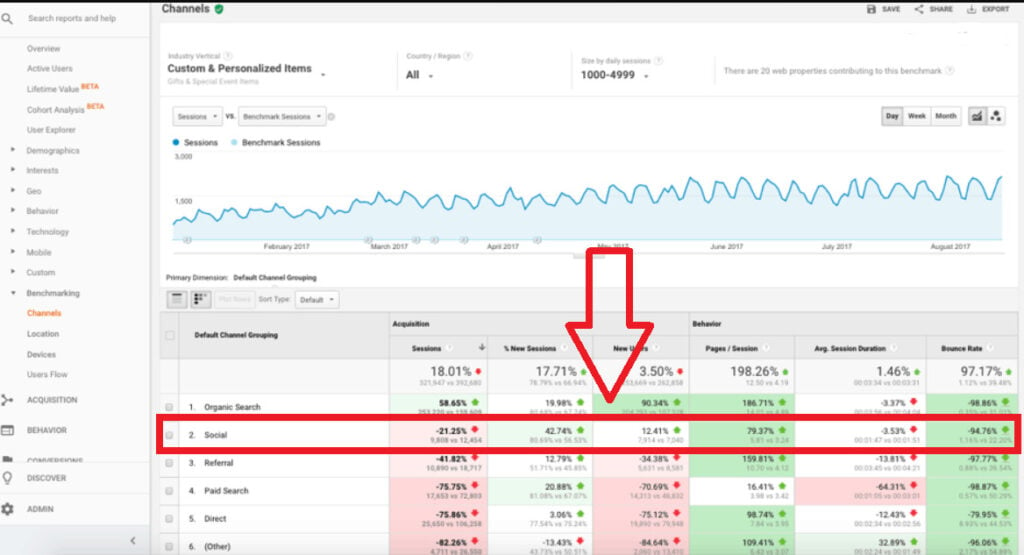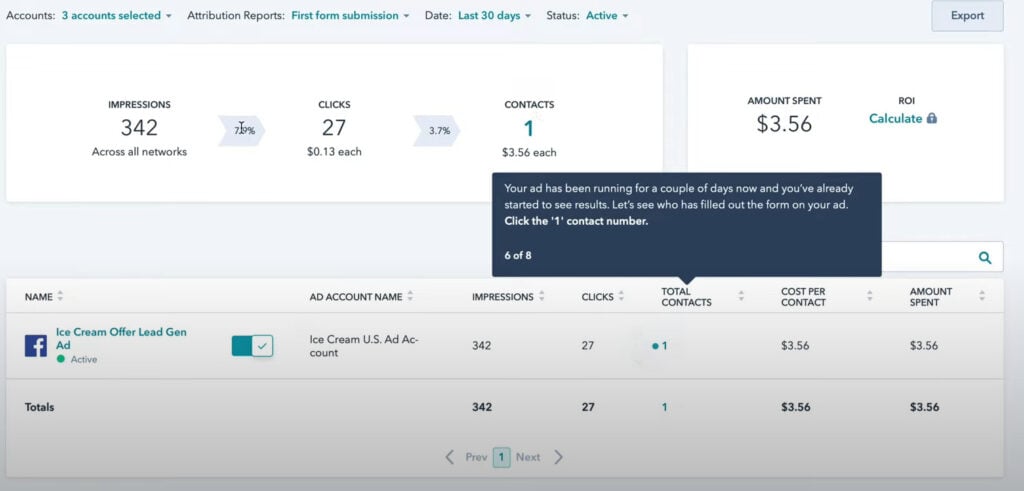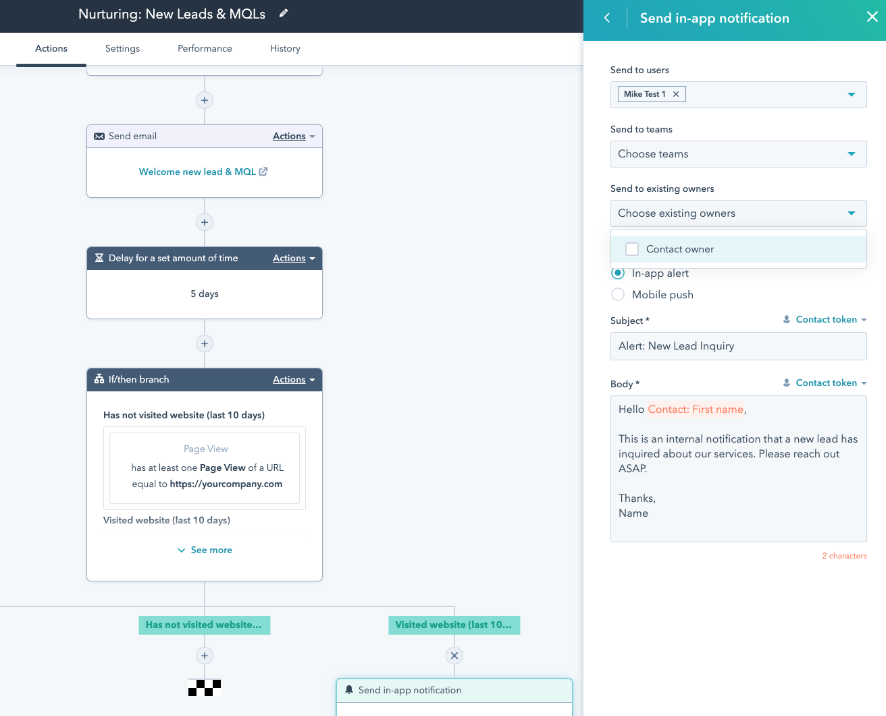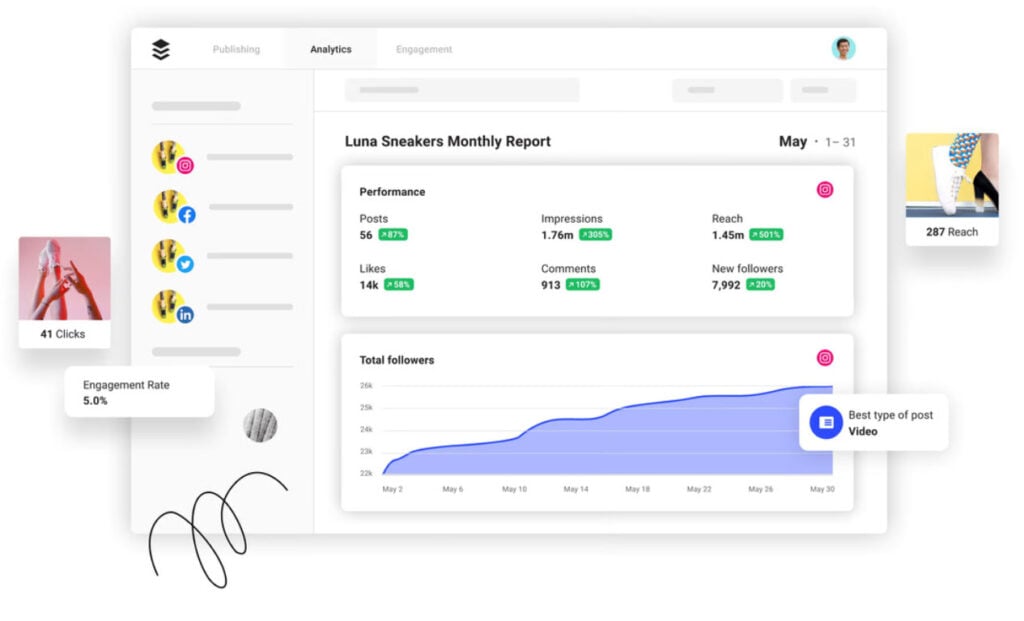[ad_1]
Social media marketing has become an increasingly integral part of advertising campaigns, but measuring its effectiveness, especially its return on investment, can be difficult.
ROI, or return on investment, measures the ratio between net income and investment. In social media marketing, that would be the cost spent on the time and money spent on social media marketing, including paid ads, creating social media-specific content, and the cost of specialized tools.
In this article, I’ll discuss the importance of measuring your social media KPIs, what metrics are most important, how to prove social media ROI, the challenges you might face, and the best practices to improve your social media ROI.
Why do You Need to Measure the Success of Your Social Media Efforts?
Measuring social media KPIs are as important as measuring any other marketing campaign’s KPIs. It not only helps you identify areas of your campaign that need rethinking, but it acts as a roadmap, showing you which methods and strategies will lead to success.
Social media is generally considered high up the sales funnel, in some cases, it’s the first interaction a user has with your brand. Thus, most marketers agree that successful social media campaigns focus on growing brand awareness.
Understanding Social Media Metrics
Social media metrics are information that you use to assess the success, and overall impact of any social media activity, including social media marketing campaigns.
Measuring social media KPIs will help you understand whether you are reaching your set goals, as well as provide you with the necessary information to improve your efforts to better accomplish your goals.
Here are some important KPIs to measure when tracking social media metrics:
1. Engagement
Engagement includes the number of likes, shares, and comments a post or ad receives on social media. A higher engagement rate means that your target audience is interested in the post, and it’s serving user intent.
2. Reach
Reach is most important when running ad campaigns on social media. Reach is the number of unique viewers that were exposed to the ad or post. It’s an important metric because it indicates how far your post or the ad has spread across a social media platform.
Since it measures unique users, it’s also able to provide important information about the users such as their location, age, and possibly gender.
3. Impressions
Impressions can sometimes get mixed up with reach, but it’s a bit different. Impressions are the number of times a post or advertisement is loaded on a specific platform. It doesn’t measure unique users, which means each time it’s loaded on a person’s feed, it counts as one impression.
4. Click-Through-Rate
Depending on the intent of your post, you might want users to click on a link, in which case you’ll also need to measure your click-through rate. This metric measures the number of users that clicked on a link placed in the post.
When running an affiliate marketing campaign, the CTR is an essential indicator to determine whether your affiliate links are successfully converting traffic into sales. Being able to carefully measure and adjust your affiliate marketing strategy will help improve your results.
5. Conversion Rate
If you’re selling a product/service, then you’ll also want to measure the conversion rate. This metric measures how many users successfully went all the way through the sales funnel and made a purchase.
6. Lead Generation
Lead generation is all about collecting customer information, especially high-quality leads (users who fit your target audience.)
If you’ve created a social media campaign that’s intent is to collect emails or other information, then each time a customer offers their email, you’ll count it as a lead.
How to Measure the Effectiveness of Your Social Media Campaigns
Now that we’ve got an idea of the key metrics to look out for, we need to understand how to measure and interpret them correctly.
Here are ways to measure the effectiveness of your social media efforts:
1. Setting Goals and Objectives
The only way you’ll be able to prove the effectiveness of your social ROI is to set proper goals. An easy system to follow when setting goals is to follow a template. One of the best templates you can use for this instance is the SMART template.
SMART stands for:
- Specific – Set specific goals that aren’t vague, and fulfill the intent and interests of your target audience.
- Measurable – Goals should be measurable through a certain metric.
- Attainable – Goals should be realistic and achievable. Setting unrealistic goals only leads to failure.
- Relevant – Goals should be relevant to not only your target audience, but also relevant within market expectations.
- Time-bound – Goals should be set within a time frame that is realistic.
2. Measuring the Correct Metrics
Not all KPIs are relevant to your goals and marketing campaign. This is especially true for social ROI. As discussed above, there are certain metrics that are important when proving ROI, such as impressions and reach, and focusing on these is key to proving social ROI success.
To measure these metrics, there are plenty of tools you can use. This brings me to my next point.
3. Using Tracking Tools
Tracking tools make tracking and gathering key metrics from your social media accounts much easier.
Here are some tools you can use to track important social media KPIs:
Google Analytics 4
Google Analytics 4 is the newest iteration of the analytics tool and has been created to unify user journeys across a multitude of different channels. Making use of Google’s machine learning technology, it’s able to provide key insights to a brand’s insights, as well as be adaptable to an ever-changing market online.
GA4 is able to operate across different platforms and does not rely on cookies only. Instead, G4 focuses on event-based data, which offers businesses data that is user-centric.
Google Analytics is limited when it comes to measuring social media KPIs, but is a great tool to measure brand awareness.
This is done by categorizing your social traffic. On GA4 there are two types, namely:
- Owned social: Users who visit your site through a link shared on social media.
- Earned social: Users who visit your site through a link shared by a user.
You can also keep track of which social channels most of your users are coming from.

Another important factor to keep in mind is assisted conversions. While it might be tempting to only factor in direct conversions, when it comes to measuring social ROI, assisted conversions are just as important.
This metric tracks users who visited your site through a social media channel, left the web page, then came back at a later time through a different channel and converted.
HubSpot
HubSpot is a CRM (customer relationship management) tool that includes a host of features, including an all-in-one inbox for all social media platforms and emails, as well as tracking and managing social media campaigns.

With HubSpot, you can easily create social media campaigns, and track their analytics from within the marketing hub. You can add multiple instagr am accounts (or any other Social Media account) on the same dashboard. You’ll be able to find your click-through rate, the amount spent, and impressions. It even has a built-in ROI calculator.
You can also create workflows that lead users from a social media post, down a sales funnel toward a conversion.

Buffer
Buffer is an all-in-one social media management tool. Its primary focus is on helping brands grow followers organically.

Image via Buffer
Through Buffer, you’ll be able to analyze your social media campaign’s boosted post insights, engagement, post analytics like hashtags, audience demographics, and impressions.
You can create customized reports with your own style and logo as well if you’re an agency.
How to Prove Your Social ROI
Once you know which metrics to measure, as well as how to measure them, it’s time to prove that your social ROI is on the right path.
Here’s how to prove your Social ROI:
Calculate How Much You Spend On Social Media
The first, and most important part of proving your ROI, is to know exactly how much you’re spending on your socials.
Costs that need to be factored in are:
- Budget allocated towards social ad campaigns.
- Content creation for social media. This includes in-house, as well as contracted work.
- If you have a dedicated social media team, their cost needs to be added.
- If you use any social media agencies, they should be included as well.
- Any content creation tools, as well as social media management tools, need to be factored in.
Measure Whether Your Goals are Being Achieved
Social ROI can be measured without considering whether goals are achieved, but in most cases that would be detrimental to your social media campaign’s success and growth.
Most social media campaign goals usually involve gaining followers, getting more reach and impressions, and generating leads. To be successful, you’ve most likely set goals that include all these metrics.
Reaching these goals adds value to your social media marketing, which means they should be factored in when calculating your social ROI. Ways your social media campaigns create value can be:
- Increase in brand awareness
- Improves the customer experience
- Improve customer loyalty and trust
- Increases lead generation and conversions
Create an ROI Report that Measures the ROI Impact of Social Media Efforts
Once you’ve settled on how much money you’re investing into your social media efforts, and established how much value those social media efforts are worth, you can create an ROI report for evaluation.
HubSpot is an excellent tool you can use that will automatically gather all these metrics from your social media campaigns, as well as the cost, and create an ROI report for you.
Remember when creating a social ROI report that you should:
- Focus on business objectives, and how your socials influence them.
- Use long-term and short-term results to show how socials improve certain KPIs.
- Avoid using metrics that aren’t related to social ROI.
Tips to Improve Your Social ROI
If you’re not seeing returns on your social media investments, don’t fear, there are ways of improving your social ROI.
Here are just a few ways to improve your social ROI:
Review and Adjust Your Strategies Regularly
Social media in general is an ever-changing market. Trends come and go, and whatever is working today, might not be working tomorrow.
That’s why it’s important to keep track of how well your social media campaigns are doing regularly. To know how often, you should keep your goals in mind.
If you’re looking to grow your social media accounts over the course of the next 6 months, you’ll need to assess your social media efforts monthly, to make sure you course correct if something isn’t working.
Don’t be afraid to experiment with different formats when adjusting your strategies. Adding content like a video to a post has been shown to boost engagement According to LinkedIn, a video post gets over 1200% more shares than a post without a video.
Make Use of Multiple Channels
Don’t just stick with a single social media platform. Certain social media platforms like Facebook and Instagram, which are both owned by Meta, can easily be integrated with one another to run ads on both. This can be done through Meta’s Business Suite.
Other social media platforms like TikTok excel in video content, whereas LinkedIn can be used to create professional leads. Cast your net as wide as your budget allows.
Incorporate Social Media Marketing Into the Bigger Picture
Never forget the bigger picture. When assessing your social ROI, you need to remember that it fits within the bigger picture of your marketing campaign. In fact, 55% of businesses consider social media marketing as part of their overall marketing campaign, and social ROI is mostly factored by brand awareness.
Conclusion
With the right goals set, measuring the correct KPIs, and using the right tools, you’ll be able to effectively measure your social ROI without hesitation. It might seem difficult to improve your social ROI, but if you keep all the tips and tricks in mind from this article, you’ll be able to improve your socials in no time.
[ad_2]
Source link









